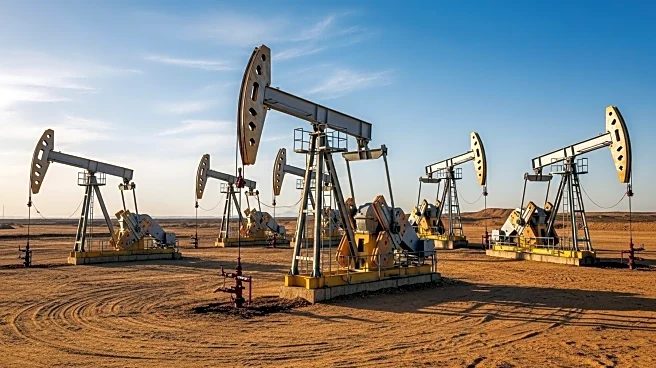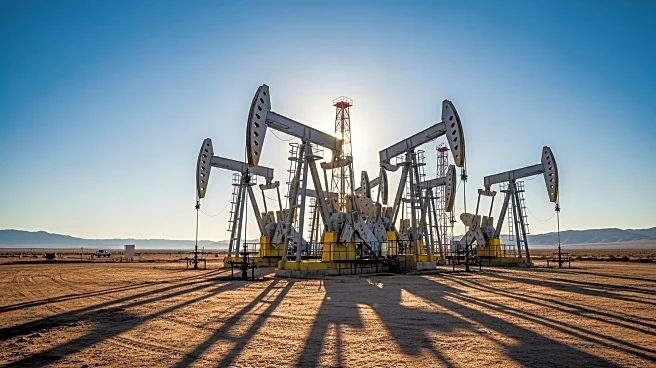What is the story about?
What's Happening?
A report from the Energy Information Administration (EIA) reveals that ten counties within the Permian basin have accounted for 93% of U.S. oil production growth since 2020. These counties, located in Texas and New Mexico, have significantly contributed to the increase in crude oil and lease condensate production, which grew by 1.9 million barrels per day between 2020 and 2024. The primary geologic units responsible for this growth are the Bone Spring, Spraberry, and Wolfcamp formations.
Why It's Important?
The concentration of oil production growth in the Permian basin underscores its critical role in the U.S. energy landscape. This region's output is vital for meeting domestic energy demands and maintaining the U.S.'s position as a leading oil producer globally. The focus on specific geologic formations highlights the importance of geological research and technological advancements in maximizing resource extraction. This growth also has implications for local economies and employment in Texas and New Mexico.
What's Next?
Continued investment and development in the Permian basin are expected, with companies likely to focus on optimizing production from the key geologic formations. Regulatory and environmental considerations will play a role in shaping future activities in the region. Stakeholders, including policymakers and industry leaders, will need to address challenges related to infrastructure, environmental impact, and market dynamics.
AI Generated Content
Do you find this article useful?
















